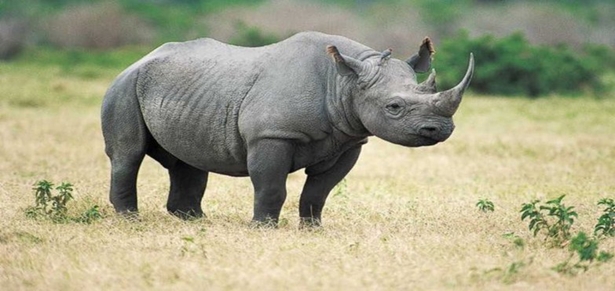

4th November 2022 (5 Topics)
Context
According to a study, published in the latest edition of People and Nature by the British Ecological Society, the horns of rhinoceroses may have become smaller over time from the impact of hunting.
Key-highlights
- The study found that the rate of decline in horn length was highest in the critically-endangered Sumatran rhino and lowest in the white rhino of Africa, which is the most commonly found species both in the wild and in captivity.
- Rhinos have long been hunted for their horns.
- This observation follows patterns seen in other animals, such as tusk size in elephants and horn length in wild sheep, which have been driven down by directional selection due to trophy hunting.
Reasons for shrinking Horns
- Rhinos have long been hunted for their horns, which are highly valued in some cultures.
- Rhino horns are made of keratin, which is also the key component of human hair and fingernails.
- The declining horn length over time across species is perhaps related to the selective pressure of hunting and evolution.
Rhinos in India
- Only the Greater One-Horned Rhino is found in India which is also known as the Indian rhino and is the largest of the rhino species.
- Assam accounts for its largest population in India and had at least five rhino-bearing areas till the 1980s.
- It is identified by a single black horn and a grey-brown hide with skin folds.
- It is one of the five species of Rhinos.
- The other four species
- White rhino: It is native to northern and southern Africa
- Black rhino: It is native to eastern and southern Africa
- Javan rhino: It is also known as Sunda rhino or lesser one-horned rhino
- Sumatran rhino: Critically Endangered species of rhino
- The other four species
- They primarily graze, with a diet consisting almost entirely of grasses as well as leaves, branches of shrubs and trees, fruit, and aquatic plants.
- This species of rhino is commonly found in Nepal, Bhutan, Pakistan, and in Assam, India.
- Protection Status
- IUCN Red List: Vulnerable
- CITES Appendix I
- Wildlife Protection Act, 1972: Schedule I
- World Rhino Day is celebrated on September 22 every year.
Conservation Efforts by India
- New Delhi Declaration on Asian Rhinos 2019: Signed by India, Bhutan, Nepal, Indonesia, and Malaysia.
- National Rhino Conservation Strategy 2019
- Project to create DNA profiles of all rhinos by the Ministry of Environment Forest and Climate Change (MoEFCC).
- Indian Rhino Vision 2020.
Conservation status of the four species
- Javan Rhinos (Rhinoceros sondaicus): Critically Endangered
- Sumatran rhinos (Dicerorhinus sumatrensis): Critically Endangered
- Black rhinos (Diceros bicornis): Critically Endangered
- White rhinos (Ceratotherium simum): Near Threatened
More Articles



